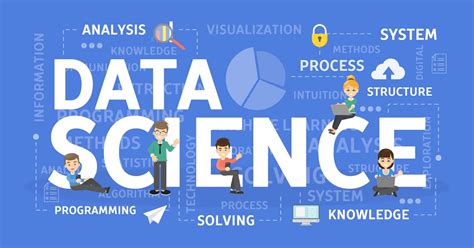In a world inundated with data, the field of data science has emerged as a crucial component in understanding and leveraging this information to make informed decisions. From predicting customer behavior to understanding market trends, data science has become an essential tool in various industries. But what exactly is data science, and how does it impact our lives? In this blog post, we will delve into the intricate world of data science, exploring its definition, importance, and the various tools and programming languages used in this field. We will also discuss the techniques involved in data collection and cleaning, as well as the significance of exploratory data analysis and visualization. Additionally, we will touch upon predictive modeling and machine learning algorithms, data interpretation, and storytelling, and the implications of big data on data science. Furthermore, we will explore the ethical and privacy concerns surrounding data science and the promising career prospects in this rapidly growing field. Join us on this journey as we uncover the unparalleled potential of data science.
Table of Contents
What is data science?
Data science is a multidisciplinary field that involves extracting insights and knowledge from structured and unstructured data. It encompasses various scientific methods, algorithms, and systems to analyze data and understand phenomena. Data science incorporates techniques from fields such as statistics, computer science, information science, and visualization to interpret and present data in meaningful ways.
One of the primary goals of data science is to uncover patterns and trends within datasets, leading to actionable insights and informed decision-making. This may involve using tools and technologies such as machine learning, predictive modeling, and data mining to extract valuable information from large and complex datasets. Data scientists often work with programming languages like Python, R, and SQL to manipulate data and perform advanced analytics.
With the increasing volume of data generated by businesses, organizations, and individuals, the demand for skilled data scientists has grown significantly. These professionals play a crucial role in leveraging data to drive innovation, improve efficiency, and gain a competitive edge in various industries. The ability to derive strategic insights from data science is considered a valuable asset for businesses and governments alike.
In summary, data science is a dynamic and evolving field that combines data analysis, statistical modeling, and machine learning to extract knowledge and insights from data. It is a key component of the digital transformation era and has numerous applications across industries such as finance, healthcare, marketing, and more.
The importance of data science
Data science is crucial in today’s digital age, as it plays a vital role in extracting valuable insights from massive volumes of data. The ability to analyze and interpret data is essential for businesses, organizations, and industries to make informed decisions, uncover patterns, and gain a competitive edge.
Additionally, data science helps in improving operational efficiency, identifying new opportunities, and mitigating risks. It enables companies to personalize their products and services based on customer preferences, leading to higher customer satisfaction and retention.
Moreover, data science is instrumental in various fields such as healthcare, finance, marketing, and research. It facilitates advancements in medical diagnosis and treatment, financial modeling and forecasting, targeted advertising, and scientific discoveries.
Furthermore, the insights derived from data science can contribute to addressing social issues, optimizing resource allocation, and driving innovation, making it an indispensable tool for progress and development.
Tools and programming languages in data science
Python is one of the most popular programming languages used in data science. It is known for its simplicity and readability, making it a great choice for beginners. Python’s extensive libraries for data manipulation, analysis, and visualization, such as NumPy, Pandas, and Matplotlib, make it a powerful tool for data scientists.
R is another widely used programming language in the field of data science. It is known for its strong statistical capabilities and is often preferred for tasks such as statistical analysis, data mining, and machine learning. R also has a vibrant community of users and developers, making it a valuable tool for collaboration and learning.
SQL, or Structured Query Language, is essential for working with relational databases, which are a common source of data for many data science projects. SQL is used for querying, updating, and managing data in databases, making it an important skill for data scientists to have. Knowing how to work with databases is crucial for extracting and transforming data for analysis.
Aside from programming languages, data science also relies on a variety of tools and platforms for tasks such as data visualization, machine learning, and big data processing. Popular tools and platforms in data science include Tableau for data visualization, Apache Hadoop for distributed storage and processing of big data, and TensorFlow for deep learning and neural network training.
Data collection and cleaning techniques
Data collection and cleaning are essential steps in the process of data science. Data collection involves gathering information from various sources, such as surveys, sensors, and social media platforms. It is important to ensure that the data collected is accurate, reliable, and relevant to the problem at hand. Once the data has been collected, the next step is to clean and preprocess it to remove any errors, inconsistencies, or missing values. This is a crucial step in the data science pipeline, as the quality of the data directly impacts the accuracy and reliability of the subsequent analysis and modeling.
One of the common techniques used in data cleaning is data wrangling, which involves transforming and restructuring the data into a usable format. This may include handling outliers, normalizing values, and dealing with duplicate or inconsistent entries. Another important technique is data imputation, where missing values are filled in using statistical methods or machine learning algorithms. Additionally, data validation is used to identify and correct errors in the data, such as formatting issues or invalid entries.
Furthermore, feature engineering is an important aspect of data cleaning, which involves creating new features from the existing data to improve the performance of machine learning models. This may include creating interaction terms, encoding categorical variables, or scaling and standardizing the data. Overall, data collection and cleaning techniques play a crucial role in ensuring that the data used for analysis and modeling is accurate, reliable, and suitable for the intended purpose.
By implementing these techniques, data scientists can effectively preprocess and clean the data before proceeding to the next stages of exploratory data analysis and predictive modeling. This ultimately helps in producing more accurate and robust insights and predictions, leading to better decision-making and problem-solving in various domains.
Exploratory data analysis and visualization
Exploratory data analysis and visualization are essential steps in the data science process, as they help to understand the underlying patterns and trends within the data.
Exploratory data analysis involves examining the data to summarize its main characteristics, often using statistical graphics and other data visualization techniques.
It is used to generate hypotheses, identify patterns and relationships within the data, and determine which variables may be important in further analysis.
Visualization, on the other hand, provides a powerful way to communicate insights and findings from the data, making it easier for others to understand and interpret the results of the analysis.
Predictive modeling and machine learning algorithms
When it comes to predictive modeling and machine learning algorithms, the potential applications are endless. These approaches allow us to analyze data and make predictions about future outcomes, whether it’s customer behavior, stock prices, or medical diagnoses. By using historical data to train models, these algorithms can uncover patterns and relationships that can help us make informed decisions.
One of the most common machine learning algorithms used in predictive modeling is linear regression, which is a statistical method for modeling the relationship between a dependent variable and one or more independent variables. This technique is particularly useful for making predictions about numerical outcomes, such as sales forecasts or housing prices.
Another powerful tool in this field is decision trees, which are used to create a model that predicts the value of a target variable based on several input variables. Decision trees are particularly useful for understanding the factors that influence a particular outcome, as they can reveal complex relationships in the data that might not be obvious at first glance.
In recent years, machine learning has become increasingly popular for predictive modeling, as it allows computers to learn from data and improve their performance over time without being explicitly programmed. This has led to the development of advanced algorithms such as neural networks, support vector machines, and random forests, which can handle complex, high-dimensional data and make accurate predictions in a wide range of applications.
Data interpretation and storytelling
Data interpretation and storytelling play crucial roles in the field of data science, as they help to make sense of complex datasets and communicate the findings to a wider audience. Data interpretation involves analyzing and extracting meaningful insights from the data, while storytelling involves presenting these insights in a compelling and easily understandable way.
Effective data interpretation requires a deep understanding of statistical analysis, data mining techniques, and domain knowledge. It involves identifying patterns, trends, and relationships within the data, and using this information to make informed decisions. Moreover, data interpretation involves translating these findings into actionable recommendations that can drive business strategies and decision-making processes.
Once the data has been interpreted, the next step is to tell a story with the data. This involves creating compelling data visualizations, such as charts, graphs, and interactive dashboards, to effectively communicate the key findings to stakeholders. It also involves crafting a narrative around the data, using storytelling techniques to engage the audience and convey the insights in a memorable and impactful way.
Overall, data interpretation and storytelling are essential components of data science, as they enable organizations to harness the power of their data and drive meaningful change through data-driven insights.
Big data and its implications for data science
Big data refers to the massive volume of structured and unstructured data that is generated by organizations on a daily basis. This data comes from a variety of sources such as social media, sensors, and business transactions, and it can be extremely valuable for businesses and organizations to analyze and derive insights from. The implications of big data for data science are vast, as it allows for more comprehensive and in-depth analysis of large datasets.
One implication of big data for data science is the need for more powerful and scalable tools and technologies. Traditional data analysis tools and databases are often unable to handle the sheer volume of data that big data encompasses. As a result, data scientists need to be proficient in using advanced programming languages and tools such as Hadoop, Spark, and NoSQL databases to analyze big data effectively.
In addition, big data has implications for the way data is stored and processed. With such large volumes of data, traditional data storage and processing methods may no longer be sufficient. As a result, data scientists need to be well-versed in cloud computing and distributed computing systems to work with big data effectively.
Another implication of big data for data science is the need for more advanced analytics and machine learning techniques. With big data, there is a wealth of information that can be gleaned from the data, and traditional statistical analysis methods may not be sufficient. Data scientists need to be proficient in machine learning algorithms and predictive modeling techniques to derive meaningful insights from big data.
Ethics and privacy in data science
In the rapidly growing field of data science, the ethical considerations and privacy concerns are of utmost importance. As data scientists work with vast amounts of personal and sensitive data, it is crucial to prioritize ethics and privacy in all aspects of data handling and analysis.
One of the key ethical considerations in data science is the responsible use of data. Data scientists must ensure that the data they are working with is obtained and used in a legal and ethically sound manner. This includes obtaining proper consent for data collection, as well as ensuring the security and confidentiality of the data throughout the analysis process.
Privacy concerns also play a major role in data science, especially with the increasing amount of big data being generated and analyzed. It is essential for data scientists to be mindful of the potential privacy implications of their work, and to take steps to protect the privacy of individuals whose data is being analyzed.
Another important aspect of ethics and privacy in data science is the responsible communication of results. Data scientists must be transparent and honest in their reporting of findings, ensuring that the privacy and dignity of individuals is maintained at all times.
Career prospects in the field of data science
With the growing demand for data-driven insights across industries, the field of data science offers promising career prospects for aspiring professionals. From entry-level positions to senior roles, the job market for data scientists has been on the rise, with a variety of opportunities for individuals with the right skill set and expertise.
Professionals in the field of data science can pursue careers in a diverse range of sectors, including technology, finance, healthcare, e-commerce, and more. This diversity of industries provides data scientists with the chance to apply their skills to various real-world problems, making the field both challenging and rewarding.
Moreover, the continuous advancements in technology and the increasing reliance on data-driven decision-making have created a constant demand for skilled data science professionals. As organizations continue to invest in big data analytics and machine learning, the job market for data scientists is expected to further expand, offering a wide array of career opportunities for individuals with expertise in data science.
Additionally, data science offers the potential for career growth and advancement, with opportunities to specialize in areas such as predictive modeling, artificial intelligence, or business intelligence. Data scientists also have the opportunity to transition into leadership or managerial roles, driving strategic data initiatives and overseeing teams of data professionals.





